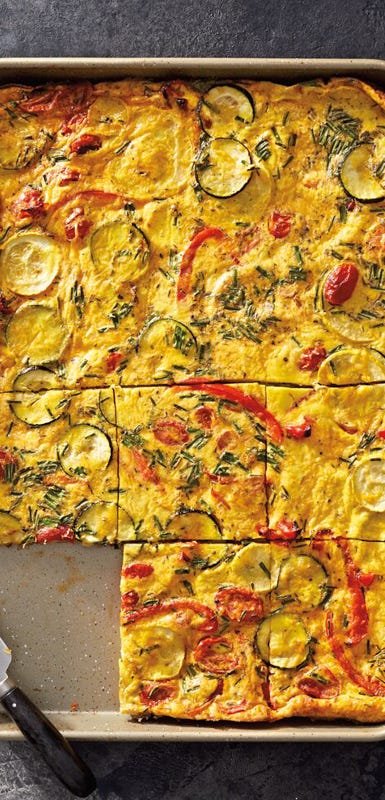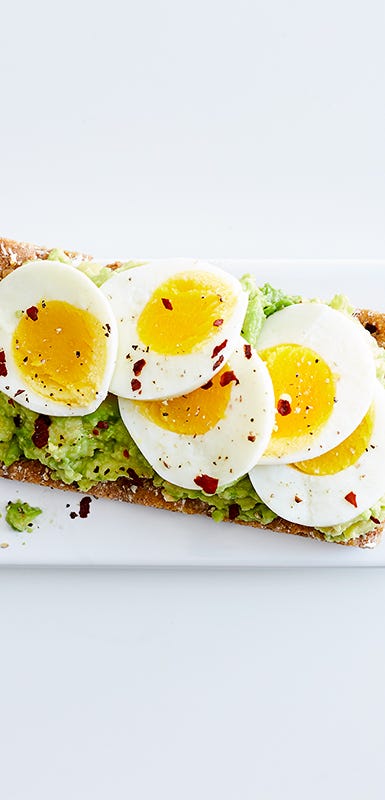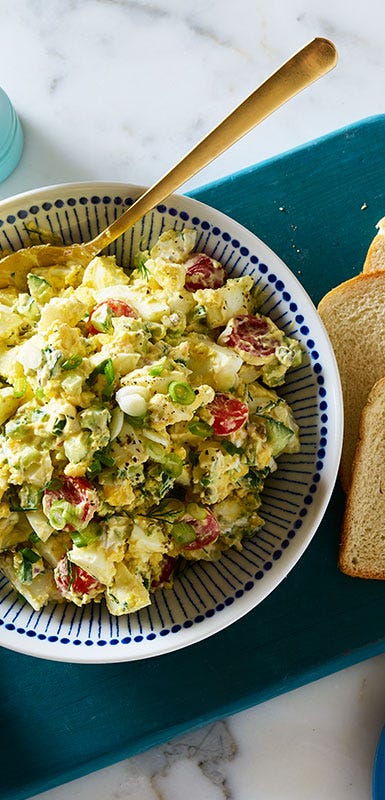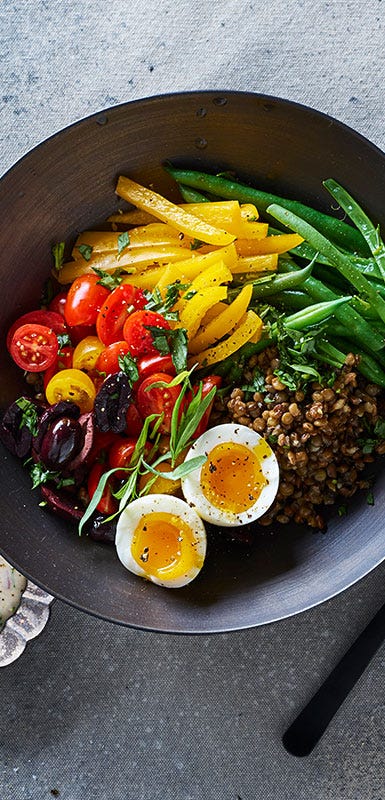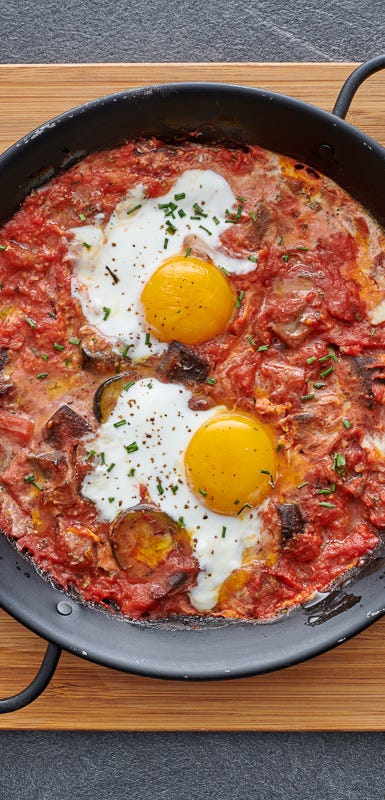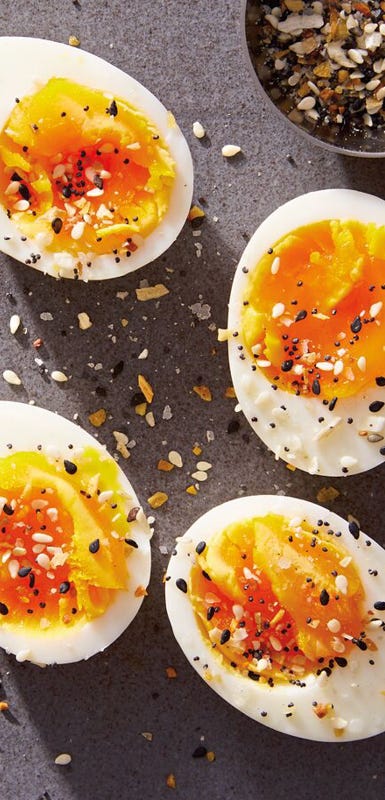ZeroPoint cheat sheet: eggs
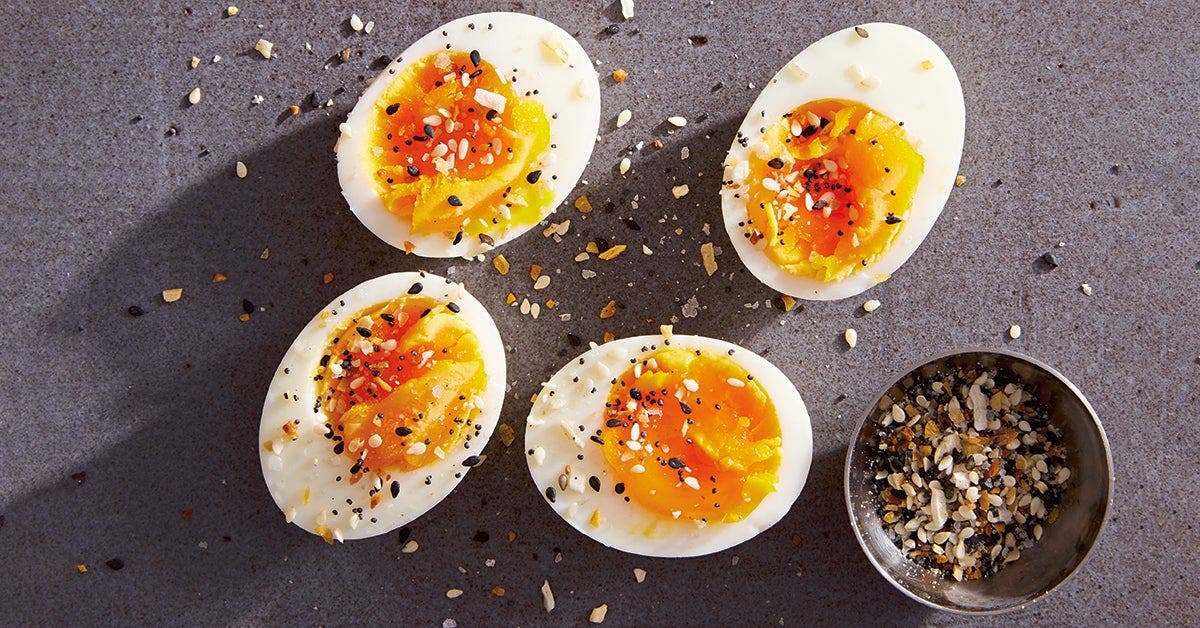
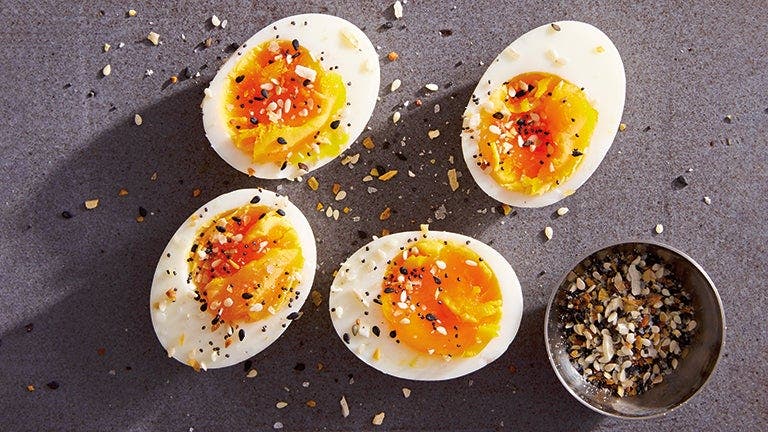
While “zero” usually means “nothing,” at WeightWatchers®, ZeroPoint® foods are everything! Here’s all you need to know about ZeroPoint eggs!
Why are eggs a ZeroPoint food?
Eggs are nutrient-dense and a good source of protein, which is important for bone and muscle health and helps you feel full longer. Eggs also contain choline, which is important for the brain and nervous system and plays an important role in creating cell membranes.
I don’t like the yolk. Do I have to eat the whole egg?
Nope! If egg whites are your jam, that’s OK too. Whole eggs, egg whites, and egg yolks in any form are ZeroPoint foods, including:
|
|
If I make a ham and cheese omelet, for example, are the eggs still considered a ZeroPoint food?
Yes! It doesn’t matter what you cook your eggs with or in. Because eggs are a ZeroPoint foods, they do not have any Points™ values—even in a cake recipe. Other ingredients you’re adding to your eggs may have Points, however, so make sure to track them.
I'm worried about cholesterol. How does eating eggs impact my health?
Cholesterol isn’t all bad. In fact, we need it for important jobs like manufacturing vitamin D and hormones and keeping cells and tissues healthy. But low-density lipoproteins (LDL)—what most people call bad cholesterol—can build up in your arteries, raising your risk of heart disease. So how do certain ZeroPoint foods, like eggs, fit into a healthy diet?
Turns out, the notion that dietary cholesterol—the kind found in eggs, shrimp, and other animal proteins—can raise your body’s cholesterol is a myth! As the Dietary Guidelines for Americans puts it, “Cholesterol is not a nutrient of concern for overconsumption.” Your liver makes the bulk of cholesterol, so for most people, the amount of animal proteins you eat has little bearing on your heart health.
Is there a limit to the number of eggs I can eat?
Eggs are a good source of high-quality protein and provide essential vitamins and minerals for a healthy diet. Per the American Heart Association’s recommendation, up to seven eggs per week is OK. But!—and this is a big but!—this has more to do with making sure you eat a variety of protein sources than putting a strict limit on your egg consumption.
Are eggs from chickens the only ZeroPoint eggs?
No. Duck, goose, quail, and turkey eggs are all ZeroPoint foods for the same reason chicken eggs are—they provide protein and other key nutrients, making them part of a pattern of healthy eating.
What can I add to my eggs that won’t add any Points?
Flavor up your eggs without using any of your Points by cooking them with nonstick cooking spray, hard-boiling them, or turning them into little egg bites. As for seasoning and flavor, experiment with hot sauces, fat-free salsas, spices, or dried or fresh herbs. Use leftover grilled, roasted, or steamed non-starchy vegetables as ZeroPoint omelet fillings or scrambled-egg mix-ins.
What’s the difference between eggs labeled as cage-free, free-range, pasture-raised, or USDA organic?
Nutritionally, they aren’t all that different from one another and are all included in this ZeroPoint food category. These labels are really more about the conditions in which the hens are kept.
Cage-free This literally means just that: The hens that lay these eggs are not caged. But there’s no guarantee of how much room they’ve been given to move around or whether they’re allowed outside.
Free-range The chickens are not caged. Plus they’ve been given some space to move about, although how much can vary widely.
Pasture-raised These hens are left to roam a field, getting some sunlight and exercise. But, once again, there’s no guarantee as to the size of that field. Pasture-raised can also mean the hens are grazing outside, so their diets are more varied, including insects and weeds.
USDA organic This is the only regulated term of the bunch. These hens are uncaged, have access to the outdoors, and are fed an organic diet. You may get some higher amounts of specific nutrients, like omega-3s, from these eggs.
Any other egg-related tips?
To figure out if your egg has gone bad or not, try the sink-or-swim test. Fill a tall glass halfway with cool water and add the questionable egg. If it sinks, it’s OK to eat. If it floats, best to toss it out.
Some of our fave egg recipes
Leslie Fink, MS, RD, has worked on the WeightWatchers editorial team for more than 21 years. She plays a key role in food, recipe, and program content, as well as product partnerships and experiences.

